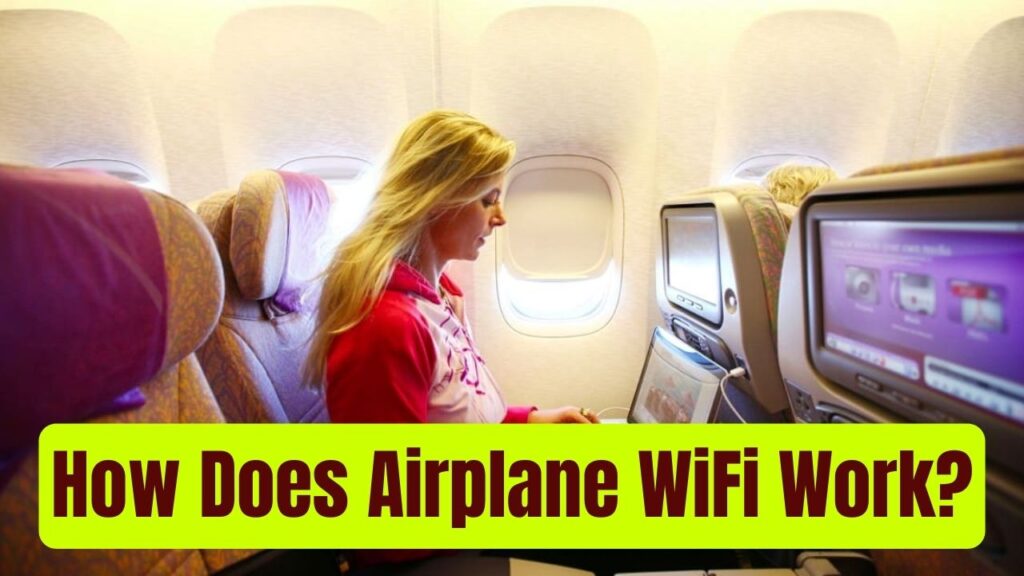
Have you ever sat on a plane, thousands of feet above the ground, and wondered, “How does airplane WiFi actually work?” If you’ve been amazed that you can send an email, stream a movie, or scroll through social media while flying at 35,000 feet, you’re not alone. Airplane WiFi is a modern marvel that combines cutting-edge technology, complex logistics, and smart engineering to keep us connected in the sky.
In this in-depth article, we’ll break down how in-flight WiFi works in a way that’s easy to understand for everyone—whether you’re a curious traveler or a tech-savvy professional. We’ll also cover types of airplane WiFi, how it affects your browsing speed, the latest innovations, and tips to make the most of your connection.
Ever Wondered How Airplane WiFi Works
| Topic | Details |
|---|---|
| How Airplane WiFi Works | Uses air-to-ground (ATG) or satellite-based systems to provide internet access |
| Main Technologies | Air-to-Ground (ATG), Ku-band, and Ka-band satellite connections |
| Data Speeds | Typically range between 3 Mbps to 70 Mbps depending on the system |
| Popular Providers | Gogo Inflight, Viasat, Panasonic Avionics, Inmarsat |
| Tips for Better Use | Connect early, limit devices, use text-based apps, and avoid heavy streaming |
| Official Resource | Federal Aviation Administration |
Airplane WiFi is one of the coolest modern conveniences—and it’s only getting better. By understanding how it works, what affects its speed, and how to use it wisely, you can make your next in-flight internet session smooth and productive.
From air-to-ground systems to high-speed satellite tech, the skies are truly becoming more connected every day. As innovation continues, we can expect faster, cheaper, and more reliable in-flight internet for all.
How Does Airplane WiFi Work?
To understand airplane WiFi, it’s helpful to think of it in two major categories: Air-to-Ground (ATG) and Satellite-Based Internet. Both systems are designed to send and receive data while in motion, but they do it in very different ways.
Air-to-Ground (ATG) Systems
ATG systems work similarly to your mobile phone connecting to cell towers on the ground. Here’s how:
- Antennas are mounted on the bottom of the aircraft.
- These antennas connect to special cell towers on the ground as the plane flies overhead.
- The signal is transmitted up to the aircraft and distributed via onboard routers.
Pros:
- Lower latency
- Works well over land
Cons:
- Doesn’t work over oceans or remote areas
- Limited bandwidth (shared among all passengers)
Gogo Inflight is a major provider of ATG systems, particularly in North America.
Satellite-Based WiFi
For flights over oceans or rural areas without tower coverage, satellite internet is used. Here’s how it works:
- The plane has antennas on top that connect to satellites orbiting the Earth.
- The satellite beams data to and from a ground station.
- The data is then routed to the global internet.
Satellite Bands Used:
- Ku-band: Widely available, good for streaming and browsing
- Ka-band: Newer, faster, and less crowded
Pros:
- Global coverage (great for international flights)
- Higher speeds with Ka-band systems
Cons:
- Higher latency
- Weather interference can affect signal quality
Companies like Viasat and Inmarsat provide satellite internet for many global airlines.
Behind-the-Scenes: The Onboard WiFi System
Once the plane receives the internet signal via ATG or satellite, it distributes it through the cabin using a system of WiFi routers and access points, just like in your home or office. The signal is managed by onboard software to prioritize traffic and ensure a fair distribution of bandwidth.
Why Is Airplane WiFi Sometimes Slow?
A common question is, “Why is airplane WiFi so slow sometimes?”
There are a few reasons:
- Bandwidth is shared among all passengers.
- Signal latency (especially with satellites) can cause lag.
- Limited infrastructure in some regions.
- Aircraft hardware limitations, depending on airline and aircraft type.
Still, newer planes with Ka-band systems and upgraded tech are offering much faster, more reliable connections.
Practical Advice: How to Get the Most Out of Airplane WiFi
Whether you’re flying for work or pleasure, here are tips to maximize your in-flight internet experience:
- Connect early: WiFi availability can be limited on full flights.
- Use one device at a time: Multiple connections slow things down.
- Opt for text-based apps like WhatsApp or Slack over video calls.
- Download heavy content (movies, large files) before boarding.
- Check airline policies: Some offer free messaging or premium tiers.
Latest Innovations in In-Flight Connectivity
The in-flight connectivity industry is advancing quickly. Some of the newest innovations include:
- 5G-enabled ATG systems: Promising much faster speeds on domestic flights.
- Low-Earth Orbit (LEO) Satellites: Like Starlink, aiming to reduce latency and increase speed.
- Hybrid Systems: Combining ATG and satellite for seamless connectivity.
Airlines like Delta, United, and JetBlue are testing these systems and working with tech giants like SpaceX and Amazon.
Real-World Example: Delta Air Lines WiFi
Delta recently partnered with Viasat to offer free in-flight WiFi on most domestic flights. Their Ka-band satellite system supports:
- Fast streaming
- VPN access
- Multiple device connections
More info here.
Frequently Asked Questions (FAQs)
1. Is airplane WiFi safe to use?
Yes, but avoid accessing sensitive data unless using a VPN. The connection is shared, so be mindful of security.
2. Can I stream Netflix on a plane?
Yes, if the airline supports high-speed satellite systems like Viasat or Ka-band connections.
3. Do all airlines offer WiFi?
No, but most major carriers do. Always check before booking.
4. Is airplane WiFi free?
It depends. Some airlines offer free messaging; others charge by hour, flight, or device.
5. How fast is airplane WiFi?
Typical speeds range from 3 Mbps to 70 Mbps, depending on the system.







